Snakes are scary even when they are docile and non-venomous. But some snakes are particularly scary through how they look, act, or how dangerous they are.
Some snakes trigger defensive reactions in humans.
It’s no wonder so many people are scared of snakes since some of them have a deadly bite and while others can even leap from tree to tree.
There’s a long list of weird snakes in the world that would make even snake enthusiasts back away.
The following species are a collection of distinct snake species which hold a unique physical trait, unique behavior, or a deadly bite.
Some of these species are found in populated areas and it’s always worth knowing when to stay away.
15. Flying Snakes – Snakes That Leap From Trees
Some snakes can glide their way through the air appearing as if they’re flying.

Flying Snakes (genus Chrysopelea) can glide through the air for tens of feet, moving faster than crawling and hopping from one tree to another or from one branch to another.
This Asian species is highly arboreal and never really spotted on the ground. Instead, these snakes are known for hopping from one tree to another.
While they don’t have wings, Flying Snakes prepare their glide by extremely flattening their bodies and moving their tails in the air to cover longer distances.
There isn’t much control of the landing destination once the snake is up in the air. This is why they take a bit to prepare for the leap for controlling their destination.
This allows them to fly through vegetation in their native forests.
All of these movements can sometimes be spotted by humans as Flying Snakes are diurnal. They aren’t typically interested in humans as they’re likely to be chasing rodents and other types of arboreal prey.
Flying Snakes are also mildly-venomous and while they can’t kill people, they should at least be avoided due to their painful bites.
14. Green Anaconda – The Largest Snake in The World

Snakes themselves can be some of the scariest animals in the world. Their appearance alone is enough to scare people off but their size can scare people away as well.
By different comparisons, Green Anacondas (Eunectes murinus) are the largest snakes in the world. These large snakes grow to a length of 16-17 feet and are even too heavy to be transported to.
These types of snakes can even weigh more than 300 lbs.
While they are the largest in the world, they aren’t the easiest to research in terms of mating strategies.
There are 2 theories regarding the breeding season of Green Anacondas. One states females release pheromones which males pick up.
Another theory states female Green Anacondas release some type of pheromone by air, which multiple males pick up and start moving toward the female.
Some evidence suggests that tens of males can pick up these cues and head toward what is a single female.
This is why Green Anacondas are the most dangerous and numerous in a place during the breeding season, which lasts from April to May.
13. Two-headed Snakes
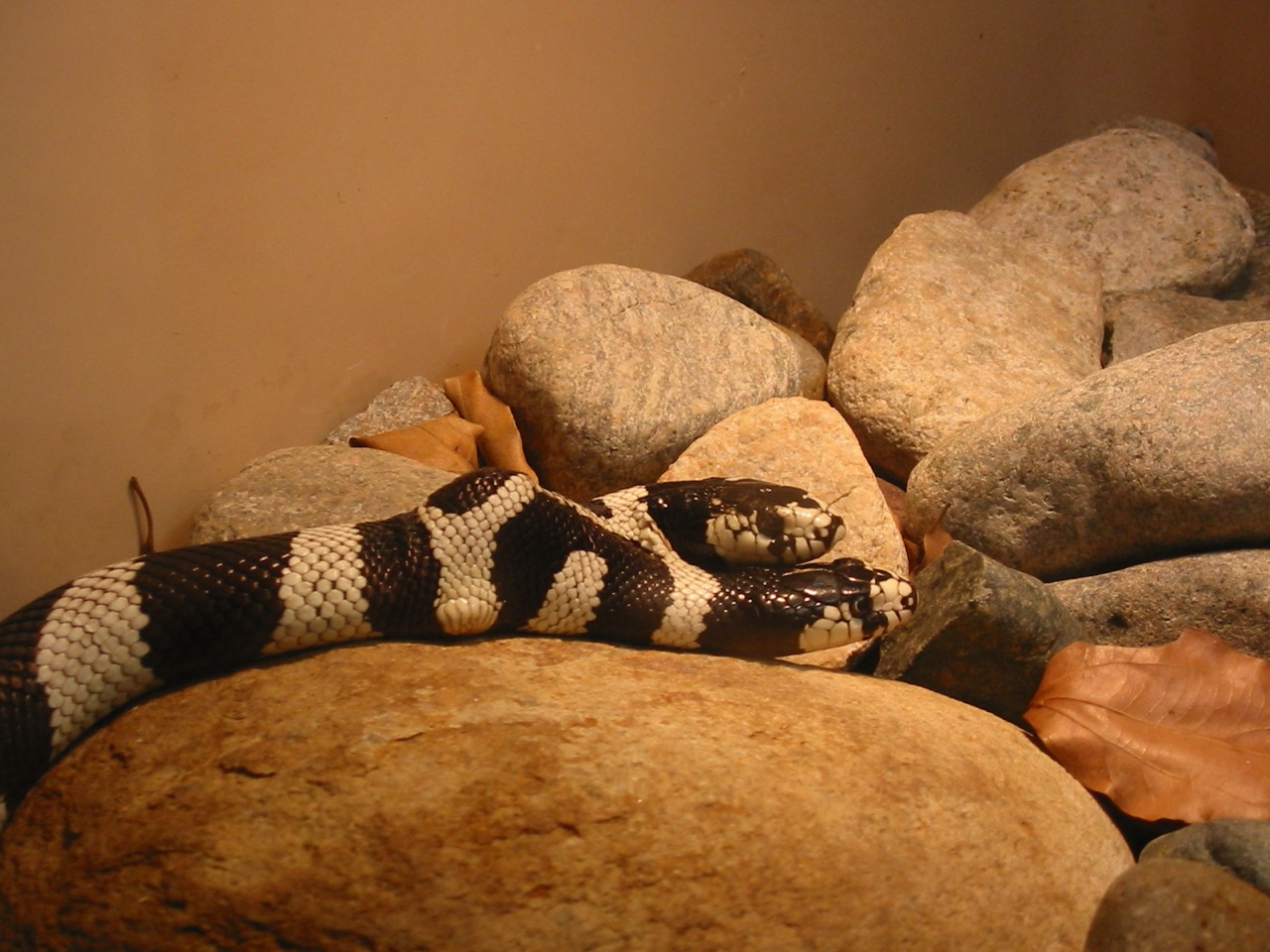
One of the scariest sights in the world is seeing a snake with 2 heads.
A very rare sight, this does happen. When it happens, it also triggers various myths and prejudices among humans.
As in all species, two-headed animals happen through an incomplete embryo separation.
Snakes that give birth to live young are much less likely to give birth to 2 headed snakes. On the other hand, snakes that lay eggs are likelier to give birth to 2-headed snakes.
Known as bicephaly, this is a condition that impacts many animals, including snakes.
It’s believed a 2-headed snake is only born out of hundreds of thousands of snakes, so this is a rare event in itself.
While rare, it’s not an event that’s so rare that’s unheard of in many snake species.
This is why you can hear and sometimes see two-headed snakes such as garter snakes or California kingsnakes.
While they may live shorter lives than most snakes, they can still be as dangerous.
These snakes can still bite and if venomous, they can have 2 venomous mouths corresponding to 2 heads.
12. Spider-tailed Horned Viper
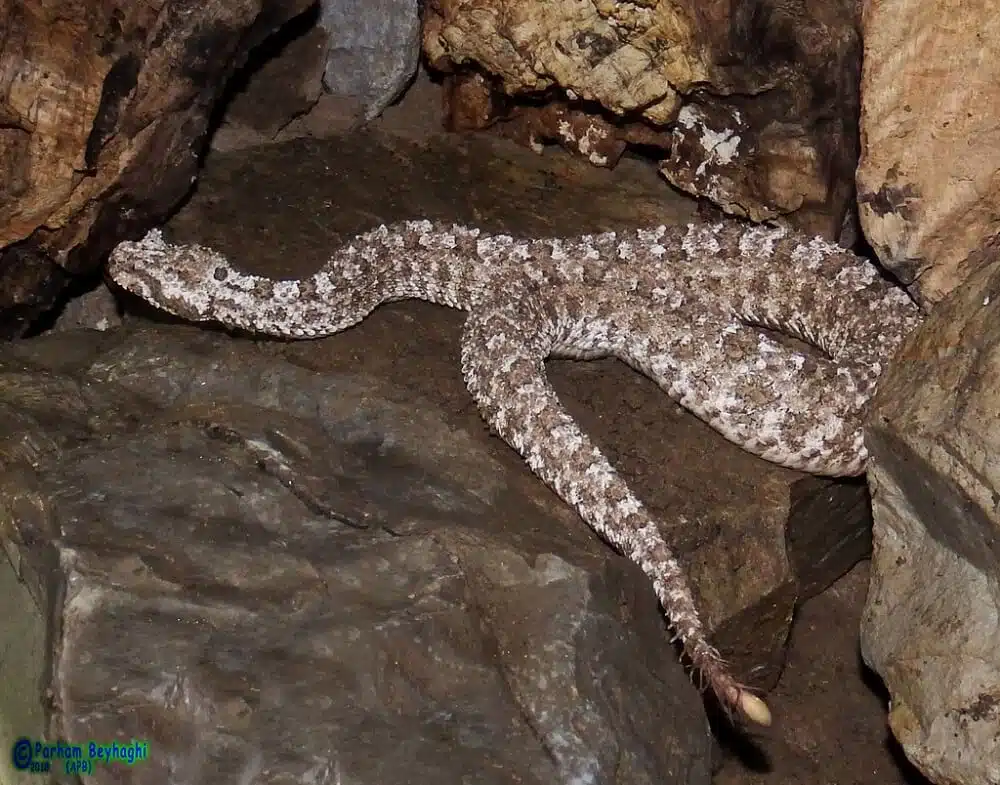
Spiders and snakes are very scary even when seen individually. They (Pseudocerastes urarachnoides) can trigger various phobias as well.
But combining them often seems unlikely as the species cannot mate.
Then there’s the exception of the snake that looks like a spider, The Spider-tailed Horned Viper.
This type of viper uses different deceiving physical traits such as taking on the color of its habitat but most importantly, taking on the appearance of a spider.
The tip of its tail shows a spider-like formation with tentacles as legs and bulbs as bodies.
It’s not all about the way the tail looks, but also about how it moves. These snakes have learned to move their tails in a way that mimics the movements of a spider.
But why go through all of this trouble?
It turns out Spider-tailed Horned Vipers are snakes that lure in birds that eat spiders with their tails.
Tail tips are flicked so that birds are intrigued and essentially fooled to launch an attack.
When in grabbing distance, the viper catches the bird and the next meal.
Luckily, there are slim chances of facing the snake yourself as it only lives in Iran.
11. Horned Vipers

Snakes are often associated with demons and there are many myths surrounding many species.
Horned Vipers (genus Cerastes) make it look like some of these myths may home some truth to them.
As their name suggests, Horned Vipers can have horns!
They are even referred to as Crowned Devils at times, mostly due to their short horns.
Not all Horned Vipers have horns. Variability isn’t determined by it’s believed these horns have different purposes.
Scaring off predators might be one of the most important reasons for these snakes to have evolved into growing horns.
These are thin and short horns that may even confuse some predators or that may make the snakes more difficult to eat.
Some other theories argue these horns are actual adaptations to windy conditions in the natural habitat of the snake.
Whatever the reasoning behind these horns is, it’s clear that these snakes already look scary than many other scary snakes.
Luckily, these snakes are a rare sight as they only live in deserts.
They are known as African desert predators spending their lives buried in sand and waiting for their next meal to pass by.
10. Hairy Bush Viper – Snakes with Spikes
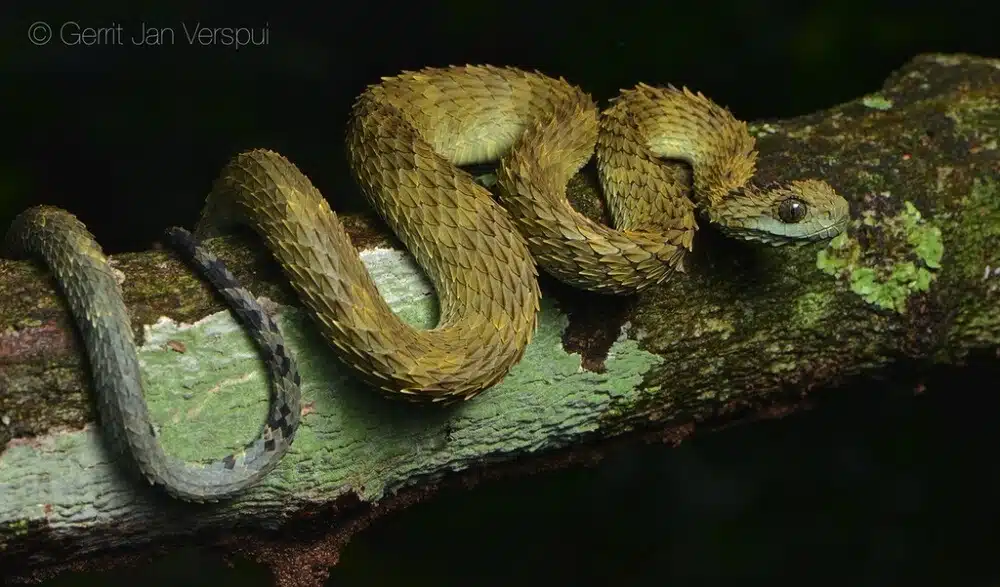
Some types of snakes look like they’ve mated with lizards. This is also the case with the scary and spiky Hairy Bush Viper (Atheris hispida).
Multiple short spikes or curved scales are seen across its dorsum, particularly on its head.
From some angles, the snake may even resemble a mythical dragon.
Many local East African myths have been tied to The Hairy Bush Viper as a result.
This is a species that comes in different ground colors or color combinations. It shows yellow, green, and olive ground colors commonly.
Red and black Hairy Bush Vipers also exist.
This is a venomous snake many locals have learned to stay away from. Mostly found on short vegetation, the snake is also a good predator.
A typical meal is based on reptiles although the snake can also eat birds.
Its diet is also influenced by its age, as are its scary spikes.
Juvenile Hairy Bush Vipers show small spikes and can even be handled. On the other hand, handling adults isn’t recommended and can also be painful.
9. Coral Snakes – Snakes with Red, Black, Yellow Bands

Coral Snakes are among the scarier species through their coloring. They show red, black, and yellow bands across the body in perfect alternation.
This colorful snake is often avoided by other species, and for good reason given it has such potent venomous bites.
Coral Snakes are partly red and this is a warning color in the animal kingdom as many red species are poisonous.
Even more, Coral Snakes like to eat other snakes and this is yet another reason the species is feared by other snakes.
Another scary fact about these snakes is that most are very good at hiding. A considerable amount of Coral Snakes are fossorial while others like to hide under objects such as rocks or logs.
This means you might only spot one when you’re already very close to it.
A selected number of Coral Snakes purely avoid coming out on a sunny day. This is why some of these snakes only bite on a rainy day when higher humidity allows them to roam around.
Highly venomous when it comes to human bites, Coral Snakes aren’t particularly as dangerous as other species as they like to hide and because they aren’t as aggressive as other snakes.
8. Spitting Cobras – Snakes that Spit Venom
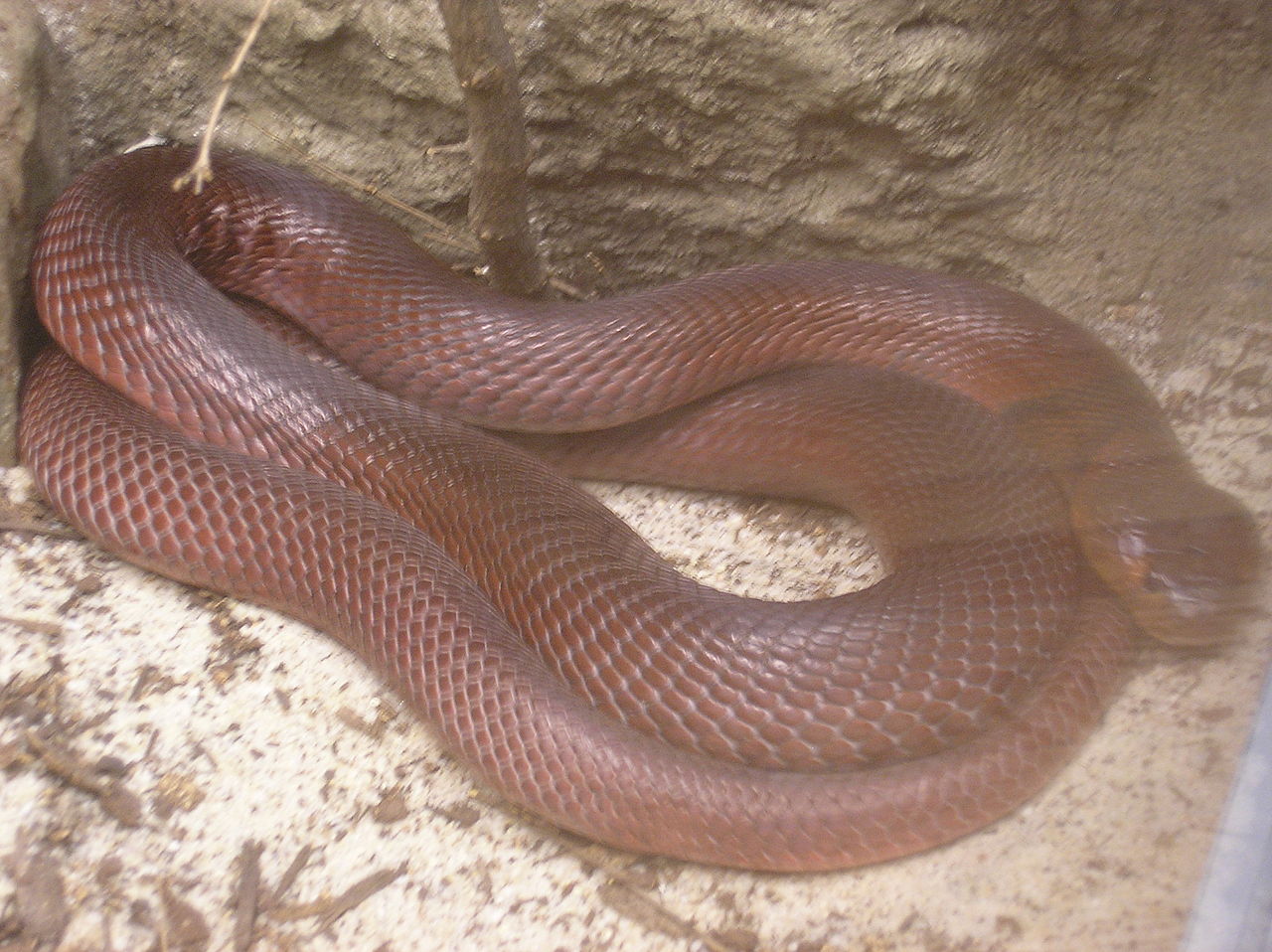
Venomous snakes are highly dangerous when they bite as they can kill people.
Some snakes are even more creative, which is the case of Spitting Cobras.
These hooded venomous snakes can spit venom onto prey, blinding their next meal or even incapacitating it completely.
Spitting Cobras can also spit venom at humans, making them potentially deadly even from a short distance away.
Many would assume the spit itself isn’t that accurate and that it’s not dangerous as a result.
The reality is the spit is highly accurate as Spitting Cobras direct their venom towards the eyes.
Any mucous membrane is a dangerous area for the venom to land on. Eyes are a target zone as is the mouth or the nose.
The venom itself is less potent if lands on the skin or another body part.
Snakes of the species are very good at aiming their venom as they use their fangs as guns to implement a direction from the spit.
The venom of Spitting Cobras is shot through their long fans. In addition, these cobras can go in for a fatal fight soon after they spit venom.
7. Rattlesnakes – deadliest snakes in The U.S.

Rattlesnakes are the most dangerous type of snake in The United States.
Highly venomous, widespread, and often aggressive, these snakes killed 3 people in 2022 alone.
Out of the victims, one was a boy age 6. The venom of these snakes is believed to be more dangerous to children and the elderly.
Deaths following the bites of these snakes are noted everywhere from Colorado to Florida.
In some cases, snake breeders only bitten by a finger still die.
Rattlesnakes have also killed people unable to receive antivenom due to existing allergies. In other cases, even 8 shots of antivenom weren’t able to save the victors.
Rattlesnakes can bite in various locations, which can lead to imminent death.
Many deaths associated with rattlesnake bites occur either on the spot or within 15 hours.
Most of those who’ve died from these venomous bites have even been rushed to the hospital, but they may have died from complications or an anaphylactic shock.
6. Eastern Diamondback Rattlesnake – heaviest venomous snake

Eastern Diamond Rattlesnakes (Crotalus adamanteus) are highly venomous and heavy. They can weigh more than 30 lbs at a length of 7 feet, which is more than other similar-length snakes.
While dangerous and heavy, the snake is also present in The United States where it can bite people.
It lives in different habitats in The Southeast, including Florida.
Eastern Diamondback Rattlesnakes can live in habitats as diverse as woodlands and beaches.
They’re very good at making the most of whatever they can hunt for on the ground and they aren’t seen up on trees or shrubs.
As the largest rattlesnake in North America, Eastern Diamondback Rattlesnakes are part of a wide group of deadly snakes and a long list of victims over the past few decades.
Eastern Diamondback Rattlesnakes are the deadliest rattlesnakes in The US.
These types of snakes are big fans of rodents when it comes to their diet. This is why they can make their way around the house in areas with rodents, such as under the patio.
There’s even an associated death in The US where The Eastern Diamondback Rattlesnake was deadly from a rodent’s burrow.
14-year-old Jimmy Cornell, one of the victims of the species, was playing outdoors next to a gopher’s hole when he was bitten after putting his hand inside the hole where an Eastern Diamondback Rattlesnake was hiding.
5. King Cobra – The longest venomous snake

King Cobras (Ophiophagus hannah) are the longest venomous snakes in the world. This Asian-origin species has a record-breaking length of over 19 feet.
Most King Cobras are shorter, but still long compared to other species. In the wilderness, most King Cobras measure around 10-13 feet.
Some of the longest King Cobras in the world are bred in zoos under strict conditions.
Some differences are noted between males and females. The male cobra is typically a few feet longer than the shorter and lighter female.
These highly venomous snakes are known as top predators, even killing other snakes.
Hooded cobras of the species have potent venom which may sometimes be combated with medical treatment such as antivenom.
Some of the reactions to its bite include blurred vision or vision loss. Paralysis is also a common reaction to the bite of this dangerous species.
4. Dubois’ seasnake – the most venomous marine snake
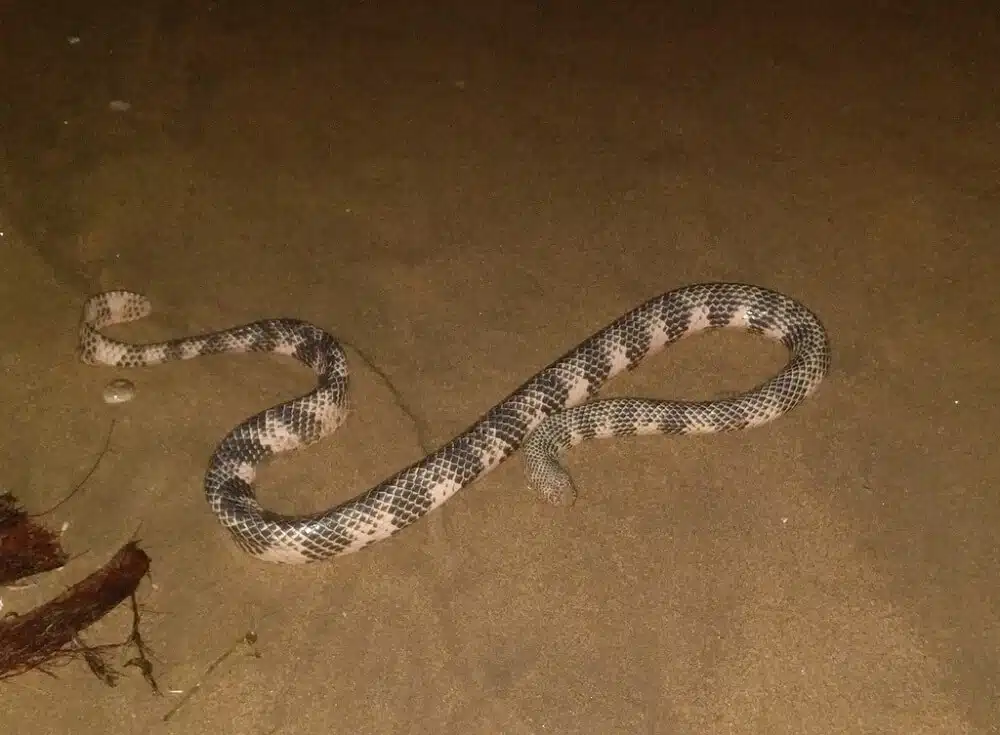
Many types of snakes are tested in laboratories for the potency of their venom.
They are categorized according to the potency of their venom and Dubouis’ sea snake (Aipysurus duboisii) comes out on top as the most venomous type of marine snake.
Given its habitat, this is also a snake that doesn’t get to see humans eye to eye on many occasions.
The potency of its venom also makes it the third most venomous snake in the world of all species, which speaks for its dangerous nature.
Humans may still face the species when traveling around Australian coasts. This is a species that lives both on The West and on The East Coasts of Australia.
Australia and its West and East Coasts are home to the 3 most venomous snakes in the world.
Apart from the Dubois’ Seasnake, this is the land of The Inland Taipan and The Eastern Brown Snake.
3. Gaboon Viper – The venomous snake with Longest Fangs

A sub-Saharan Species, Gaboon Vipers (Bitis gabonica) are venomous and scary.
The fangs of Gaboon Vipers are as long as 2.2 inches, making them both dangerous and the longest fangs seen on any type of venomous snake in the world.
These fangs aren’t just for show as the snake uses them to trap prey.
Many types of venomous vipers strike prey and wait nearby for it to die. Gaboon Vipers bite and hold prey.
Their long fans help get a strong grip even on large animals such as rabbits.
Even more, Gaboon Vipers are adapted to move their fangs along the prey as needed, so that it doesn’t escape.
They also know how to bite again in case they miss their first attempt.
Vipers of the species are also highly aggressive when it comes to male-to-male confrontation.
Interestingly, these snakes don’t rely on their fangs when fighting their species. They wrestle, don’t bite, and don’t use their fangs when in confrontation with another member of their species.
2. Inland Taipan – the most venomous snake
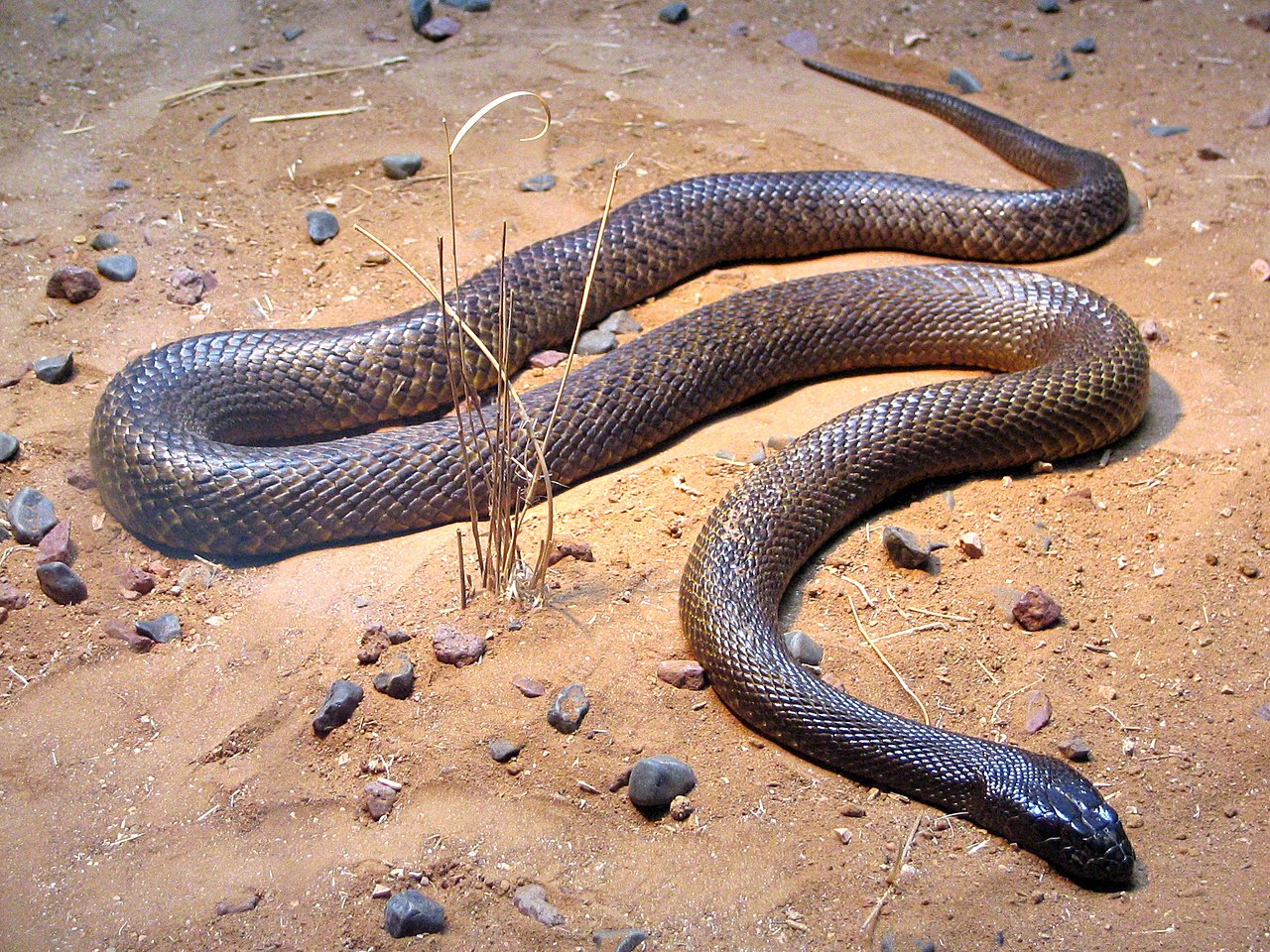
As the most venomous snake on land, Inland Taipans (Oxyuranus microlepidotus) are highly scary. Some people can even suffer panic attacks just by seeing these snakes and knowing they can have a deadly bite.
The venom of these snakes is so potent that a single bite could, in theory, kill 100 people.
Inland Taipans have venom comprised of neurotoxins, hemotoxins, and myotoxins. These affect the nervous system, the cardiovascular system, and the muscles, instantly killing mammals.
Snakes of the species are specialized in killing mammals which means their venom is also highly efficient in killing humans.
Only found in Australia’s black soil plains between the state of Queensland and Southern Australia, this is a species that lives in an extremely harsh climate.
Inland Taipans live in areas with short or almost no vegetation where they survive on rodents, seeking them out in rodent burrows or soil cracks.
These snakes are even so remote that they are rarely spotted by humans.
For hundreds of miles around, there’s almost no human in sight and even barely any dirt roads.
Surprisingly, there are even a few recorded deaths tied to the bite of this snake.
A combination of o highly potent venom and very remote living means this snake has little impact on humans.
Even more, Inland Taipans were believed to be extinct to the scientific community up until the early ‘70s.
1. Saw-scaled Viper – most fatal bites

While not as venomous as Inland Taipans, Saw-scaled Vipers (Echis carinatus) are the most deadly snakes in the world.
Commonly occurring in populated areas, this is the deadliest snake in the world, despite its size.
The snake can measure as little as 15 inches, with only the largest specimen growing to 30 inches.
Saw-scaled Vipers are among the species that have potent venom that prevents blood clotting.
Its hemotoxic and cytotoxic venom is particularly dangerous to humans and other mammals.
The species shows a growing presence in Africa and The Middle East but it’s the deadliest in India, Pakistan, and Bangladesh.
Almost all bitten people who make it to the hospital survive as there’s general antivenin for the snake’s bite.
Some people even manage to avoid a bite at the last moment as this snake makes a saw-like noise with its scales as it moves into an S-position preparing to attack.